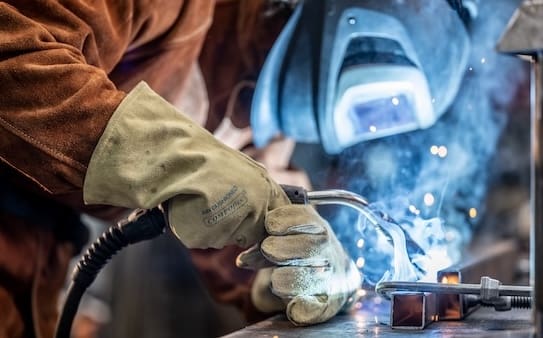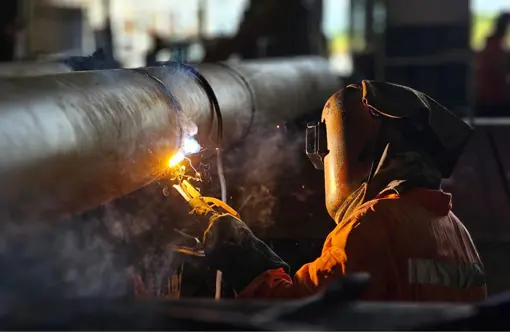A quick guide about overheating prevention from Montana Mobile Welding and Repair
Wiki Article
All About Welding: Secret Insights Into Techniques and Ideal Practices for Success
Welding includes a variety of methods, each suited for details products and applications. Comprehending these techniques, such as GMAW, SMAW, and TIG, is important for accomplishing perfect outcomes. The right equipment and safety and security techniques can not be neglected. As prep work and repairing play critical functions in the welding procedure, grasping these components can greatly enhance the high quality of the end product. What are the crucial elements that assure an effective weld?Recognizing Various Welding Strategies
Welding methods include a variety of methods, each suited to specific applications and materials. Among the most usual strategies are Gas Steel Arc Welding (GMAW), Shielded Steel Arc Welding (SMAW), and Tungsten Inert Gas Welding (TIG) GMAW, additionally recognized as MIG welding, is prominent for its speed and flexibility, making it suitable for thin products. SMAW, or stick welding, is favored for its simpleness and efficiency in exterior atmospheres, specifically with thicker steels. TIG welding offers precision and control, making it suitable for complex work and non-ferrous metals (Welding). Each method has its unique benefits and factors to consider, allowing welders to select the best method based on the project's requirements, product type, and preferred outcomes. Comprehending these techniques is vital for successful weldingNecessary Welding Tools and Devices
While various welding strategies call for specific abilities, the ideal equipment and tools are just as crucial for achieving quality results. Necessary welding tools consists of welding equipments, which vary relying on the strategy-- such as MIG, TIG, or stick welding. Safety gear, consisting of gloves, headgears, and aprons, guarantees safety and comfort throughout the procedure. Furthermore, fixtures and clamps aid safeguard materials in position, ensuring precision in welds. Consumables like welding poles, cable, and shielding gas are also essential components that affect the high quality of the weld. Tools such as mills and cutters help with surface preparation and post-weld ending up, adding to a professional result. Investing in high-quality tools ultimately boosts the effectiveness and performance of welding tasks.Security Practices in Welding
Appropriate security techniques are essential in the welding market to protect employees from potential threats. Welders need to use ideal personal safety devices (PPE), including headgears with correct shading, handwear covers, and flame-resistant clothes. Ample air flow is important to decrease direct exposure to dangerous fumes and gases produced throughout the welding process. Additionally, employees should be learnt the right handling of welding devices to stop accidents. Fire security measures, such as keeping flammable materials far from the welding location and having fire extinguishers readily offered, are necessary. Routine inspections of devices and work areas can aid recognize prospective risks prior to they bring about mishaps. By sticking to these safety and security practices, welders can develop a much safer working environment and reduce threats related to their profession.Readying Products for Welding
Preparing products for welding is a vital step that greatly influences the quality and integrity of the end product (Montana Mobile Welding and Repair Fabrication). Proper preparation entails cleansing the surfaces to remove contaminants such as corrosion, oil, and dust, which can jeopardize the weld. Strategies such as grinding, fining sand, or utilizing solvents are frequently employed to accomplish a tidy surface. Furthermore, ensuring that the materials mesh well is important; spaces can result in weak welds. It's also essential to take into account the alignment and positioning of the parts, as this will influence the convenience of welding and the final end result. Ultimately, selecting the appropriate filler product and making sure compatibility with the base metals is important for achieving strong, long lasting weldsTips for Achieving High-Quality Welds
Achieving top notch welds requires attention to detail and adherence to finest practices throughout the welding procedure. Correct joint preparation is necessary, making certain surface areas are tidy and cost-free from contaminants. Picking the proper filler product and welding technique based on the base metals is essential for excellent bonding. Maintaining regular traveling rate and angle while welding can avoid problems and promote harmony. Furthermore, managing heat input is necessary; extreme warmth can result in bending and weakened joints. Frequently evaluating the welds during the procedure enables prompt adjustments if required. Ultimately, utilizing ideal post-weld treatments, such as cleaning and stress alleviation, can improve the durability and honesty of the weld, inevitably ensuring a successful end result.Repairing Common Welding Issues
Welding often presents difficulties that can impact the high quality and stability of the end product. Common concerns such as porosity, inconsistent weld grains, and getting too hot can occur, each calling for certain fixing strategies. Recognizing these troubles is vital for welders to improve their skills and accomplish optimal outcomes.Porosity Problems Explained
Porosity can commonly be forgotten, it stays a crucial concern in welding that can jeopardize the stability of a finished item. Porosity describes the existence of tiny gas pockets within the weld bead, which can weaken the joint and lead to early failing. This issue generally emerges from pollutants, dampness, or improper protecting gas insurance coverage throughout the welding process. To minimize porosity, welders need to verify that the base materials are Click This Link dry and clean, use proper protecting gases, useful content and keep consistent welding specifications. Regularly inspecting the equipment and atmosphere can likewise help identify possible issues before they materialize in the weld. Attending to porosity efficiently is necessary for attaining solid, durable welds that satisfy top quality criteria.
Inconsistent Weld Beans
Inconsistent weld beads can significantly influence the high quality and strength of a completed product. Different elements add to this problem, including incorrect travel rate, incorrect amperage settings, and inconsistent electrode angles. When the welder moves also promptly, a bead might show up narrow and lack penetration, while moving as well slowly can trigger too much buildup. Furthermore, utilizing the wrong amperage can cause either undercutting or too much spatter, both of which concession weld integrity. The welder's technique, such as irregular lantern movement, can likewise lead to irregular grain appearance. To alleviate these troubles, welders need to concentrate on preserving stable, controlled motions and making sure correct equipment settings to attain uniformity in their welds. Consistency is essential to accomplishing reliable and strong welds.Overheating and Bending Issues
Extreme warm during the welding process can result in significant overheating and contorting issues, affecting the structural integrity of the workpiece. These problems typically materialize as distortion, which can jeopardize alignment and fit-up, making further setting up testing. Factors contributing to overheating include the selection of welding parameters, such as voltage and travel rate, along with the type of material being bonded. To mitigate these problems, welders must keep constant traveling rate and ideal warmth input while keeping an eye on the work surface temperature level. In addition, pre-heating or post-weld heat treatment can assist alleviate tensions brought on by rapid cooling - Montana Mobile Welding and Repair Belgrade. Normal assessment and adherence to best methods are important in protecting against overheating and making certain the long life and reliability of bonded frameworksFrequently Asked Questions
What Are the Career Opportunities in the Welding Industry?
The welding market offers varied job opportunities, consisting of placements as welders, engineers, educators, and assessors. Specialists can operate in production, building, aerospace, and automotive industries, benefiting from solid demand and competitive incomes in different duties.Just How Can I Improve My Welding Rate Without Giving Up Top Quality?
To improve welding speed without giving up high quality, one should practice efficient methods, keep equipment, optimize settings, and boost hand-eye sychronisation. Regular training and looking for feedback can likewise significantly add to attaining much faster, high-grade welds.What Qualifications Are Offered for Welders?
Many qualifications exist for welders, including those from the American Welding Culture (AWS), the National Center for Building Education and Research check it out Study (NCCER), and various industry-specific organizations. These credentials enhance employability and show ability effectiveness.Just How Does Welding Affect the Qualities of Metals?
Welding affects the properties of metals by altering their microstructure, which can cause modifications in hardness, ductility, and toughness. Heat input and air conditioning prices throughout the process greatly affect these product characteristics.Can I Bonded Dissimilar Metals Together?

Report this wiki page